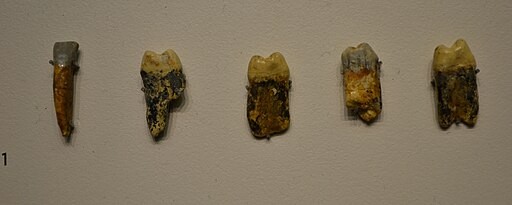Dental problems have afflicted humanity for ages. Although the oral cavity is the most well-studied component of the ancient human microbiome, the characterization of prehistoric oral metagenomes is limited. In Europe, only a few full genomes are available prior to the Middle Ages, with none compared to more recent archeological discoveries.

(Photo : Wikimedia Commons/ Dorieo)
Ancient Bites
In the early 1990s, a small, inconspicuous cave called Killuragh Cave, Co. Limerick on the banks of the Mulkear River in Ireland was recognized as an archaeological site when its landowner Benny O'Neill discovered some prehistoric artifacts. This led to two archeological excavations conducted in 1993 and 1996.
During the excavations, experts uncovered several human teeth, including two molars estimated to be about 4,000 years old. When the two teeth were sampled, it was confirmed to be from the same person who lived during the Bronze Age.
One tooth showed surprising abundance of Streptococcus mutans, a type of oral bacteria which causes cavities. This bacteria is rarely found in the ancient genomic record, likely because it does not preserve well. According to Trinity College Dublin assistant professor Lara Cassidy, this might be explained by the fact that the acid-producing nature of S. mutans causes decay and DNA degradation within teeth.
It is unclear why Streptococcus mutans on the newly discovered tooth were preserved extremely well, but experts believe that the cool and dry conditions of the cave were likely factors.
READ ALSO: Scientists Say Neisseriaceae Bacteria Evolves to Survive in the Oral Cavity
Dietary Changes and Tooth Decay
Although cavities have been observed on other ancient teeth, Streptococcus mutans have only been discovered in very low amounts in a handful of discovered remains, such as in a Neolithic tooth from southwestern France dating between 3400 and 2900 BC, or a chewed pitch from the Scandinavian Mesolithic dating between 9890 and 9540 BC.
Cavities from other ancient teeth have become more frequently observed after the adoption of cereal agriculture, when humans farmed grains such as barley and wheat. Cassidy also noted that the bacteria is not as commonly found within ancient teeth because the ancient human diet included fewer processed foods and less refined sugar than are consumed today.
After analyzing the bacteria found on Bronze Age teeth and comparing it to modern samples, the research team found the evolutionary tree of the ancient Streptococcus mutans to be more complex than originally thought. They also found that the traits of ancient bacteria, like virulence, have likely evolved alongside changes in human diet.
A significant shift in the human diet was observed with the start of agriculture around 10,000 years ago. However, the past few hundred years have seen major changes with the popularization of sugar. According to Louise Humphrey from the Centre for Human Evolution Research at the Natural History Museum in London, the finding of the new research supports previous research which found higher rates of cavities after refined sugar became widely available in the 19th century.
The researchers also assume that the changes in the human diet and their effects in oral and gut microbiome might help us gain insight as to why certain diseases have become so prevalent in Western countries in the past few centuries.
RELATED ARTICLE: Why Do Humans Have Wisdom Teeth? Exploring the Evolutionary History of the Third Molars
Check out more news and information on Oral Health in Science Times.














